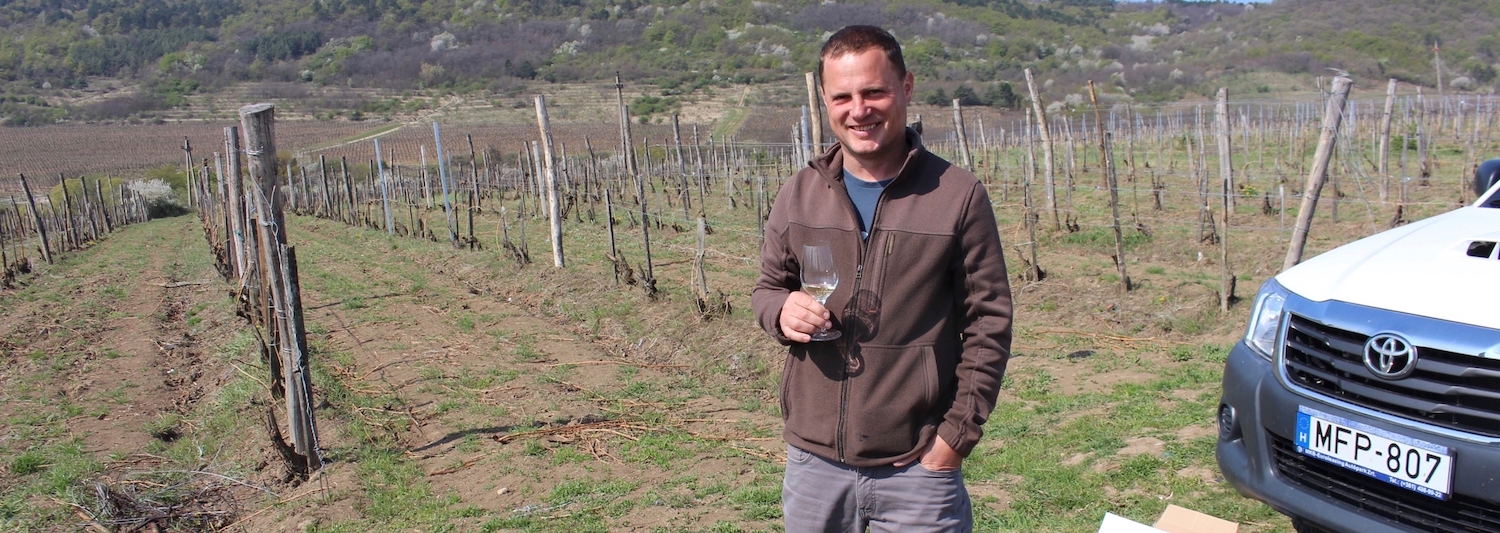

Bodrog Borműhely, Tokaj, Hungary
By maintaining tiny parcels of vineyards in historically great sites, Hajdú János & Farkas Krisztián are making pure, modern, yet classically inspired dry wines.
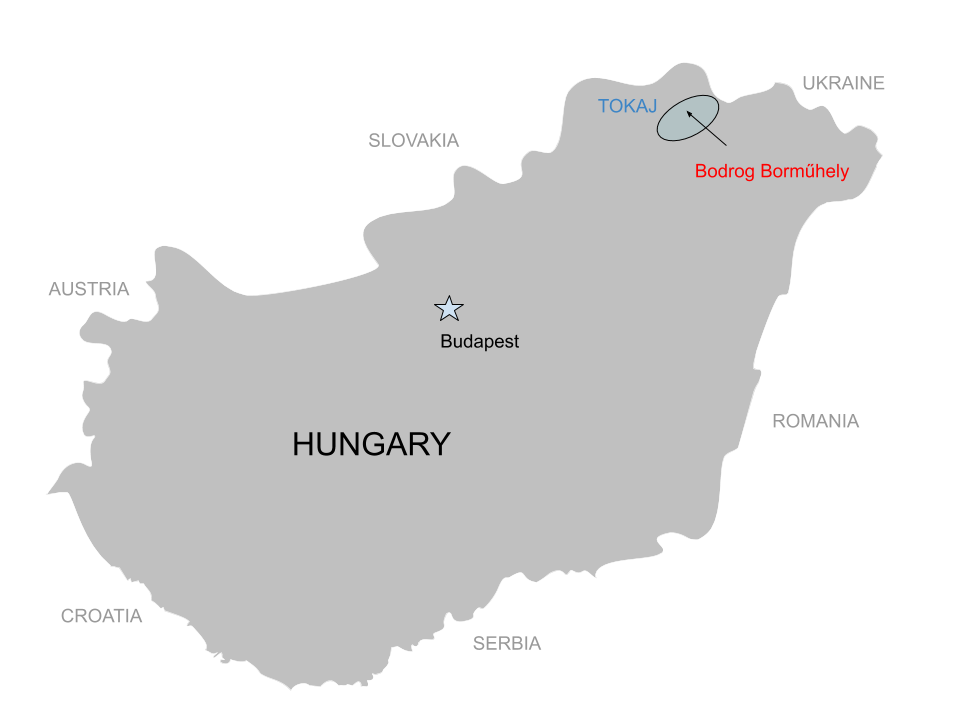
At a Glance
http://www.bodrogbormuhely.hu
Tokaj
Cool Continental
Volcanic rock covered with a layer of rich reddish and brown clay
170-200m
Low hills and landscapes of vines and forests
Furmint, Hárslevelű
5.7 hectares
Certified Organic
Natural
Tokaj
Cool Continental
Volcanic rock covered with a layer of rich reddish and brown clay
170-200m
Low hills and landscapes of vines and forests
Furmint, Hárslevelű
5.7 hectares
Certified Organic
Natural
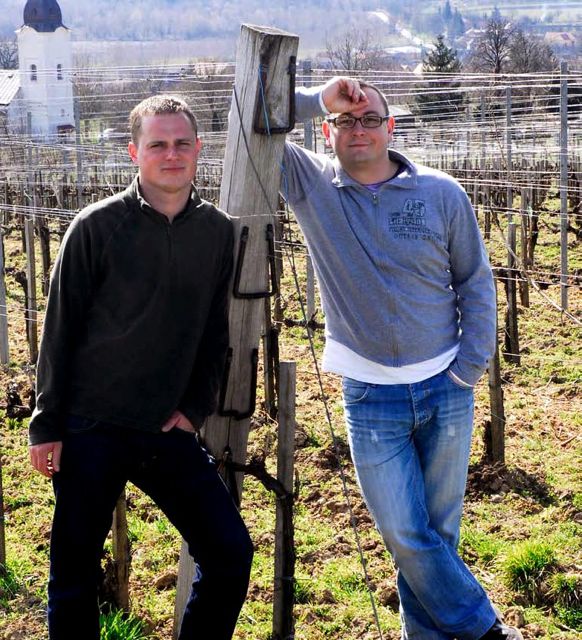
Hajdú János & Farkas Krisztián
The Appellation
In North-Eastern Hungary, Tokaji - Hegyalja warranted the world’s first appellation system over 100 years before Bordeaux. For nearly 400 years, it has served as a diplomatic tool to court foreign powers, inspired countless artists and philosophers, and has become so ingrained in Hungarian identity that it’s part of their National Anthem. One of the key features of life and history in the region is the Bodrog River. It runs from the village of Sárospatak in the north east all to the way down to Tokaj Hill in the south. The name “Bodrog” dates back to the first Magyar conquest and the very first kings of Hungary. It’s also responsible for the moisture that along with a unique confluence of grapes and terroir, makes Botrytis so prevalent.
Today, only 20+ years after the reestablishment of private and family wineries Hungary is in the midst of a wine renaissance. Bodrog Borműhely, or “Bodrog wine(bor) workshop” started by János Hajduz and Krisztián Farkas is emblematic of this new era. By maintaining tiny parcels of vineyards in historically great sites, they are making pure, modern, yet classically inspired dry wines. Knowing when to pick and where, avoiding Botrytis, and then fermenting with native yeasts in local oak barrel are the means to this end.
Today, only 20+ years after the reestablishment of private and family wineries Hungary is in the midst of a wine renaissance. Bodrog Borműhely, or “Bodrog wine(bor) workshop” started by János Hajduz and Krisztián Farkas is emblematic of this new era. By maintaining tiny parcels of vineyards in historically great sites, they are making pure, modern, yet classically inspired dry wines. Knowing when to pick and where, avoiding Botrytis, and then fermenting with native yeasts in local oak barrel are the means to this end.
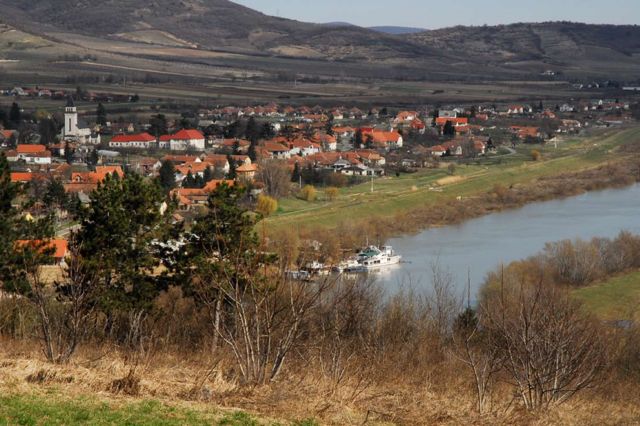
The Bodrog river
Vineyards
On the west side of Tokaj Hill near the village of Tarcal lies the historic Deák Vineyard, classified as a 1st Class site in 1798. The soil is thick with loess, rich in minerals, and with a solid bedrock of dacite. Most of the Furmint is located on a steep slope about 100-150 m above sea level.
The Dereszla vineyard has a Southwest exposure about 120-150 meters above the village of Bodrogkeresztúr and the Bodrog River. Its climate is temperate and very breezy. The soil is loess (3-5 meters) that the rhyolitic volcanic debris and richly grained perlite. The base rock is andesite. János and Krisztián work a small 0.65 hectare area planted in the early 1980’s with about 70% planted to Hárslevelű and the rest Furmint.
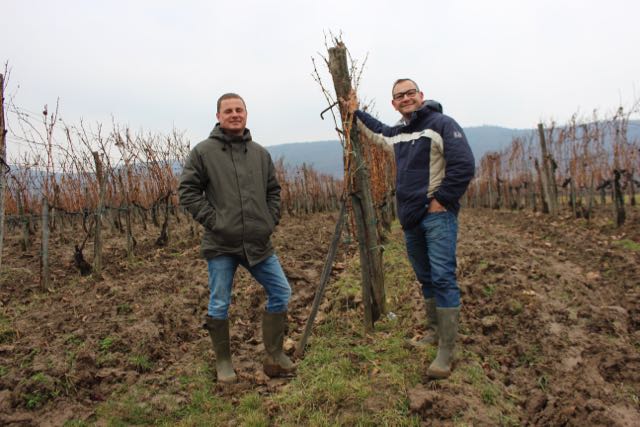
In the vineyard
The Lapis Vineyard is near the town of Bodrogkeresztúr and looks down onto the Bodrog River and its floodplains. Despite being near to all of this moisture, Botrytis only hits certain parts of the vineyard. The 0.7 ha that they farm is 155m up and in a breezy spot making dry wines possible. The soil is a mixture of rhyolite with strong brown clay soil and tufa. If there were to be reclassification of the Tokaji vineyards, this would be a strong contender for a Great Growth.
The Halas (Fish) vineyard is just southwest of Lapis near the town of Bodrogkisfalud. The vineyard is covered with a think layer of Nyirok - a rich reddish clay unique to Tokaji over a base of hardened rhyolite (volcanic) rock. The microclimate is relatively warm compared to other parts of the appellation, but the vines are 40-50 years old and well adjusted. In addition to Furmint, there is also a small plot of Pinot Noir, which will soon be ready to make wine for the very first time.
The Dereszla vineyard has a Southwest exposure about 120-150 meters above the village of Bodrogkeresztúr and the Bodrog River. Its climate is temperate and very breezy. The soil is loess (3-5 meters) that the rhyolitic volcanic debris and richly grained perlite. The base rock is andesite. János and Krisztián work a small 0.65 hectare area planted in the early 1980’s with about 70% planted to Hárslevelű and the rest Furmint.

In the vineyard
The Lapis Vineyard is near the town of Bodrogkeresztúr and looks down onto the Bodrog River and its floodplains. Despite being near to all of this moisture, Botrytis only hits certain parts of the vineyard. The 0.7 ha that they farm is 155m up and in a breezy spot making dry wines possible. The soil is a mixture of rhyolite with strong brown clay soil and tufa. If there were to be reclassification of the Tokaji vineyards, this would be a strong contender for a Great Growth.
The Halas (Fish) vineyard is just southwest of Lapis near the town of Bodrogkisfalud. The vineyard is covered with a think layer of Nyirok - a rich reddish clay unique to Tokaji over a base of hardened rhyolite (volcanic) rock. The microclimate is relatively warm compared to other parts of the appellation, but the vines are 40-50 years old and well adjusted. In addition to Furmint, there is also a small plot of Pinot Noir, which will soon be ready to make wine for the very first time.
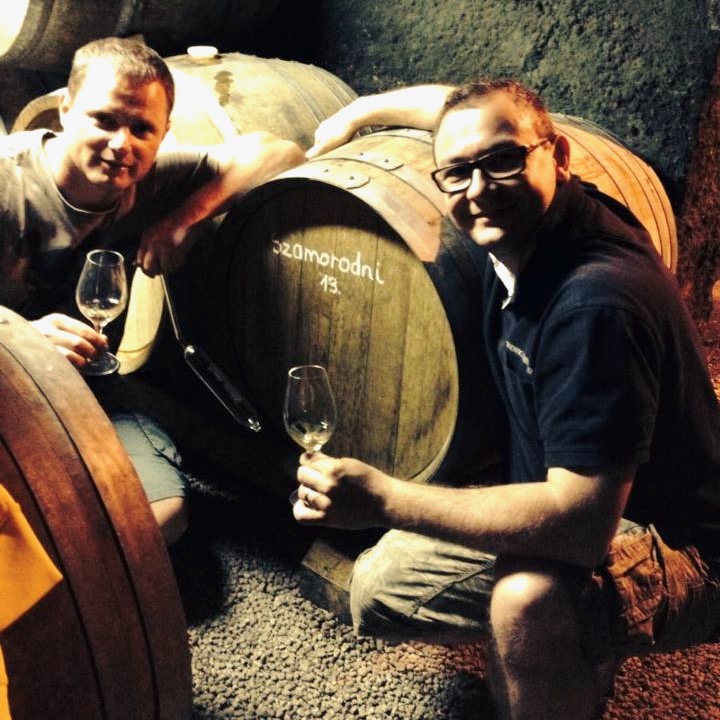
In the Cellar
Winemaking
All wines are hand picked and sorted in the vineyard and then again in the winery. After settling for at least a day after crush, wines are barreled down into local Szerednye Oak Barrels (3-4 years old) and left to ferment on their own yeasts. After regular batonnage, full malolactic fermentation and 9 months of aging sur lie, all wines are gently filtered and sulfured before bottling.

White Wine , Organic
Furmint; Hárslevelű;
12%
5.8 g/l
6.3 g/l
Furmint; Hárslevelű;
12%
5.8 g/l
6.3 g/l
We’ve been importing the single vineyard dry wines since the 2011 vintage. These are barrel fermented, often have some degree of botrytis and or extended maceration and at least 6 months on the lees in barrel. This Dry Tokaj represents something new. In 2017 the Halas vineyard was largely destroyed by hail and what was left went to their Aszú production. We had room for something else and Krisztián proposed we try their new all stainless steel Dry Tokaj. It’s difficult to find an organically farmed value driven dry Furmint that isn’t then overworked and or made according to a consistent recipe in the cellar. This still has the Bodrog signature although nothing like their single vineyard offerings. 30% Hárslevelu and 70% Furmint, it as the name suggests is a dry, low alcohol, fresh and great place to get people onto the Furmint train.
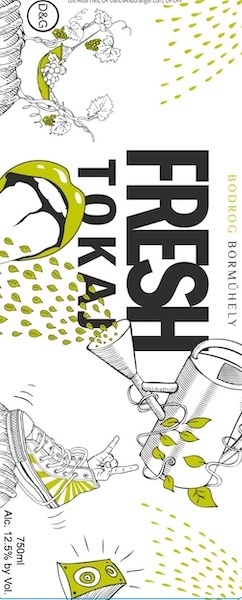
White Wine , Organic
Muscat à petit Grain;
11.9%
4.6 g/l
7.2 g/l
Muscat à petit Grain;
11.9%
4.6 g/l
7.2 g/l
While we are still bringing in top tier Aszú and single vineyard Furmints from Bodrog Bormühely, we’ve been also been bringing in their Dry Tokaj (Furmint & Hárslevelű) project for a few years that relies on a custom crush complex allowing them a different scale of production. This is organically farmed fruit, but picked well before the vintage gets tricky and completely avoids botrytis. The winemaking is modern and straightforward - direct press and all stainless steel. Now we are happy to add the Fresh Tokaj. It’s essentially the same idea but with Sárgamuskotály (Yellow Muscat). Super high acidity, aromatic, a few grams of RS and bitterness for balance, and really fun to drink at 11%.
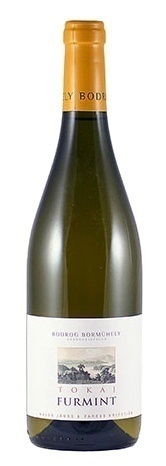
White Wine
Furmint;
13%
3.5 g/l
6.2 g/l
Furmint;
13%
3.5 g/l
6.2 g/l
Aromatic and razor sharp. Fermented much the same way as the other Bodrog wines in local Szeredny oak. Where the single vineyard Lapis is creamy and mineral sweet, the Halas vineyard is more tea-like in flavor and texture. Still incredibly young and recently bottled, this wine will continue to evolve in the coming months into the more fiery side of Furmint. Pairs very well with fatty and spicy soups, and like the name of the vineyard meaning fish indicates, it is delicious with fresh water fish.

White Wine , Organic
Furmint;
13%
7.8 g/l
7 g/l
Furmint;
13%
7.8 g/l
7 g/l
Lapis is an iconic vineyard in Tokaj. Located near the town of Bodrogkeresztúr and looking down onto the Bodrog River with the Várhegy (Castle Hill) volcano to the east. Despite being near to all of this moisture, Botrytis only hits certain parts of the vineyard. The 1 hectare that they farm is 155m up and in a breezy spot making dry wines more feasible. The soil is a mixture of rhyolite with strong brown clay soil and tufa. Where the Várhegy has aromatics at the forefront, the Lapis has texture. Only 5-6 hours of maceration, left overnight to settle out, then barreled down for 6 months. Bottle conditioning is always key with these wines. There’s a smidge of RS but balanced by ripping acidity and everything is happening in a 12.5% package. Furmint from the Lapis is creamy without being flabby, and is like honeyed stone fruit rolled in the spice trade.
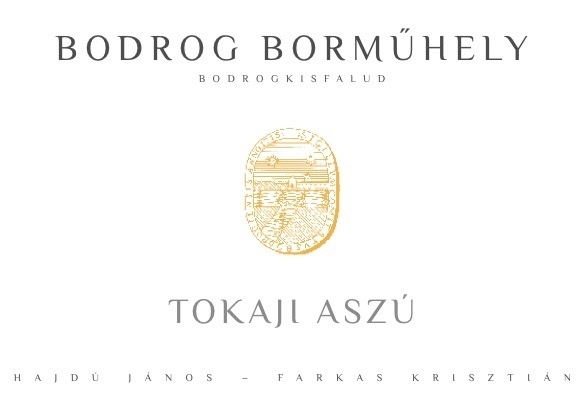
Dessert Wine
Furmint; Hárslevelű;
9.5%
179 g/l
10.96 g/l
Furmint; Hárslevelű;
9.5%
179 g/l
10.96 g/l
Bodrog Borműhely's Aszú winemaking is geared towards freshness and utilizes some interesting techniques. They add the individually picked Aszú berries to a 7-8% fermenting base wine (Lapis mostly) for 6-8 hours of maceration. Another trick is making a little Fordítás to be blended in later to help stabilize. Fordítás is an older, less common style in Tokaj that consists of pouring fresh wine over already pressed Aszú and essentially creating a secondary Aszú. It’s usually much lighter but also usually with 15-16% alcohol and only 30-50 g/l residual sugar. They blend these two together, age between 12-18 months in barrel and out comes an impossibly naturally sweet, high acid, aromatic and structured wine.
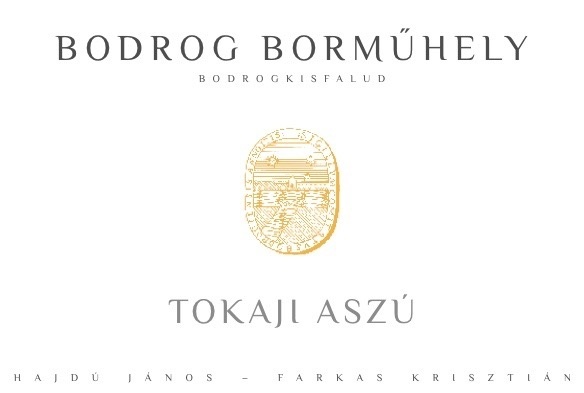
Dessert Wine
Furmint; Hárslevelű;
10.1%
219 g/l
7.82 g/l
Furmint; Hárslevelű;
10.1%
219 g/l
7.82 g/l
This is perhaps the most high octane Aszú we’ve ever brought in from Bodrog Borműhely. When you consider that the top vintage of Château d'Yquem was arguably the 1945 vintage at 164 grams per liter of residual sugar, this 2019 comes in around 55 grams per liter higher. Their Aszú winemaking is also geared towards freshness and utilizes some interesting techniques. They add the individually picked Aszú berries to a 7-8% fermenting base wine (Lapis mostly) for 6-8 hours of maceration. Another trick is making a little Fordítás to be blended in later to help stabilize. Fordítás is an older, less common style in Tokaj that consists of pouring fresh wine over already pressed Aszú and essentially creating a secondary Aszú. It’s usually much lighter but also usually with 15-16% alcohol and only 30-50 g/l residual sugar. They blend these two together, age between 12-18 months in barrel and out comes an impossibly naturally sweet, high acid, aromatic and structured wine.